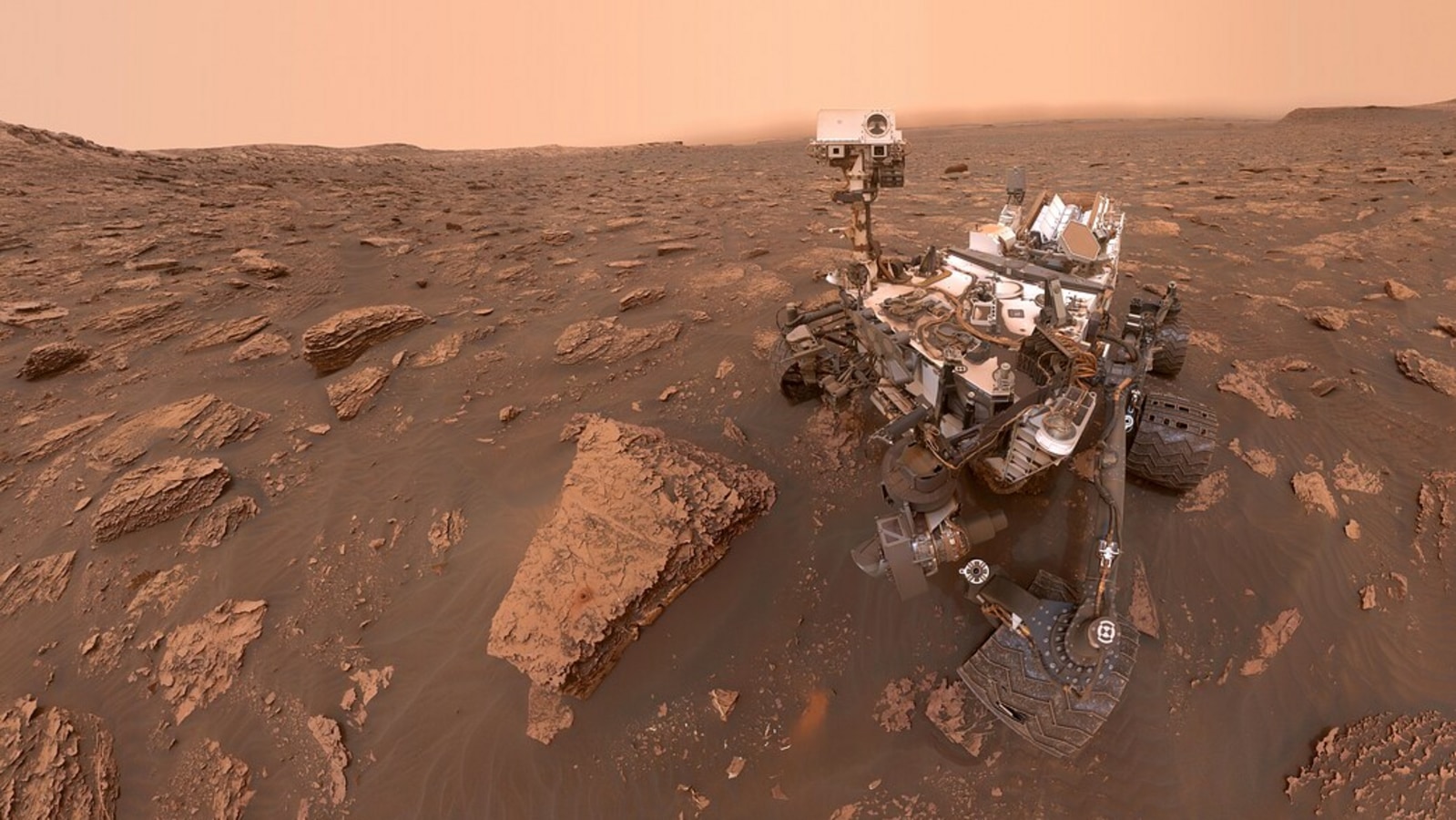NASA shares awesome Curiosity selfie! Celebrates 10 years of the rover on Mars
NASA celebrated 10 years of Curiosity rover landing on Mars and has shared the rover’s dusty selfie.
Everything we see around us including space, oceans, planets, among others, hold many secrets. In order to know more, scientists and researchers are making continuous efforts to ensure the well-being of humanity. One such effort includes knowing more about the planet Mars and NASA had sent Curiosity rover for the same purpose to the Red Planet in August 2012. The research organisation on August 5 celebrated 10 years since the Curiosity rover landed on Mars. Since its landing, Curiosity has been trying to find out how Mars has evolved from a wet, habitable planet to a cold desert environment.
And now, NASA has shared an image where Curiosity shot a self-portrait at Gale Crater on SoI 2082 (June 15, 2018) using the Mars Hand Lens Imager, or Mahli. Informing about the same, NASA on August 5 said in a report, “Today marks 10 years since the Curiosity rover landed on Mars. Since August 2012, Curiosity has been exploring 3-mile-high Mt. Sharp in Gale Crater. The rover has climbed more than 2,000 feet (612 meters), reaching progressively younger rocks that serve as a record on how Mars has evolved from a wet, habitable planet to a cold desert environment.”
Also Read: Forget asteroids, comets, solar storms, NASA is EXCITED about this
According to the information provided by NASA, the rover has analyzed 41 rock and soil samples, relying on a suite of science instruments to learn what they reveal about Earth’s rocky sibling.
And it’s pushed a team of engineers to devise ways to minimize wear and tear and keep the rover rolling: In fact, Curiosity’s mission was recently extended for another three years, allowing it to continue among NASA’s fleet of important astrobiological missions.
Also Read: Can near-Earth object be DANGEROUS? Here is how NASA wants to stop scary comets, asteroids
It can be known that the rover’s radiation sensor lets scientists measure the amount of high-energy radiation future astronauts would be exposed to on the Martian surface, helping NASA figure out how to keep them safe.
But most importantly, Curiosity has determined that liquid water as well as the chemical building blocks and nutrients needed for supporting life were present for at least tens of millions of years in Gale Crater. The crater once held a lake, the size of which waxed and waned over time. Each layer higher up on Mount Sharp serves as a record of a more recent era of Mars’ environment.
For all the latest Technology News Click Here

